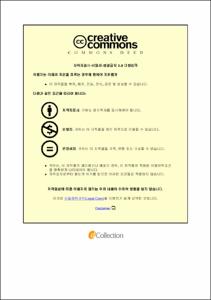SNS기반의 동영상을 활용한 히크만카테터 보유 환자의 자가소독법 교육 및 효과
- Alternative Title
- Education and effectiveness of self-disinfection methods for patients with a Hickman catheter using SNS-based videos
- Abstract
- Purpose
This study aims to assess how using social media videos to educate leukemia or pre-transplantation blood cancer patients on disinfecting Hickman catheter affects their knowledge of caring for and practice of disinfecting self –care Hickman catheter. It also aims to identify the effects of such education on patients’ catheter-related complications, and thereby further improve their ability to self-care.
Method
Data were collected between December 20, 2019, and May 7, 2020, from patients in a university hospital who were diagnosed with blood cancer and were using Hickman catheter. There were 27 subjects in the experimental group and 26 subjects in the control group. Data analysis was conducted using IBM SPSS Statistics 22, while the Chi-squared and Fisher’s exact tests were used to identify the general characteristics of the experimental and control groups. The Shapiro-Wilk test was used preliminarily to detect normality in the experimental and control groups, and the independent sample t-test and the Mann-Whitney U test were used to analyze the equality of variances. The subsequent difference in knowledge regarding Hickman catheter between the experimental and control groups was analyzed using the independent sample t-test. The actual practice of disinfecting self-care Hickman catheter and complications were analyzed using the non-parametric Mann-Whitney U test, which does not require the assumption of normality.
Result
1. The first hypothesis was that “the experimental group that received education on self-care disinfection of Hickman catheter through social media videos would have more advanced knowledge regarding Hickman catheter than the control group.” Results supported the hypothesis and showed that there was a significant statistical difference in the degree of knowledge on caring for Hickman catheter (t=4.911, p<.001), in addition to a meaningful difference in the degree of knowledge on how to disinfect Hickman catheter infection sites (t=2.629, p=.018).
2. The second hypothesis was that “the experimental group that received education on disinfecting self-care Hickman catheter through social media videos would disinfect their Hickman catheter more often than the control group.” Results supported the hypothesis and showed that the two groups showed significant statistical difference in this regard (Z=-4.245, p<.001).
3. The third hypothesis was that “the experimental group that received education on self-care disinfection of Hickman catheter through social media videos would have fewer complications on their Hickman catheter insertion sites than the control group.” The hypothesis was rejected because results showed that the two groups did not show a significant statistical difference in this regard (Z=-1.149, p=.251).
Conclusion
The research results found that education on self-care disinfection of Hickman catheter using social media videos increases awareness of the necessity of Hickman catheter and the importance of infection control, thereby improving self-care ability, practice, and knowledge regarding Hickman catheter. Because the education is systematic and standardized, and offers simple explanations using auditory and visual media, it is also expected to have positive effects on treatment and the function of Hickman catheter even after hospital discharge. Nonetheless, it is necessary to conduct long-term check-ups on the development of any complications after education on self-care disinfection of Hickman catheter using social media videos. It is also necessary to study how such education affects the development of complications and nursing efficiency in the hospital.
- Issued Date
- 2020
- Awarded Date
- 2020. 8
- Type
- Dissertation
- Keyword
- Hickman catheter Self-management Knowledge Self-disinfection Knowledge Self-disinfection Behavior Complication SNS-based videos
- Publisher
- 부경대학교
- Alternative Author(s)
- Hye Jin, Choi
- Affiliation
- 부경대학교 대학원
- Department
- 대학원 간호학과
- Advisor
- 박은아
- Table Of Contents
- I . 서론 1
1. 연구의 필요성 1
2. 연구의 목적 5
3. 연구의 가설 6
4. 용어의 정의 7
II . 문헌고찰 8
1. 혈액암 환자의 히크만카테터 관리와 합병증 8
2. SNS기반의 동영상을 활용한 자가소독법 교육 11
III . 연구방법 13
1. 연구 설계 13
2. 연구 대상 14
3. 연구진행절차 15
4. 실험처치 22
5. 연구 도구 24
6. 자료수집 방법 27
7. 윤리적 고려 28
8. 자료 분석 방법 29
IV . 연구결과 30
Ⅴ. 논의 37
Ⅵ. 결론 및 제언 43
참고문헌 46
부록 55
설명문 및 동의서 55
설문지 56
히크만카테터 자가소독법 소책자 62
히크만카테터 자가소독법 동영상 시나리오 68
히크만카테터 QR코드를 이용하여 동영상 교육 71
히크만카테터 자가소독법 교육 72
IRB 승인 통지서 74
도구 승인 75
논문 유사도 검사 76
- Degree
- Master
- Files in This Item:
-
-
Download
 SNS기반의 동영상을 활용한 히크만카테터 보유 환자의 자가소독법 교육 및 효과.pdf
기타 데이터 / 1.84 MB / Adobe PDF
SNS기반의 동영상을 활용한 히크만카테터 보유 환자의 자가소독법 교육 및 효과.pdf
기타 데이터 / 1.84 MB / Adobe PDF
-
Items in Repository are protected by copyright, with all rights reserved, unless otherwise indicated.